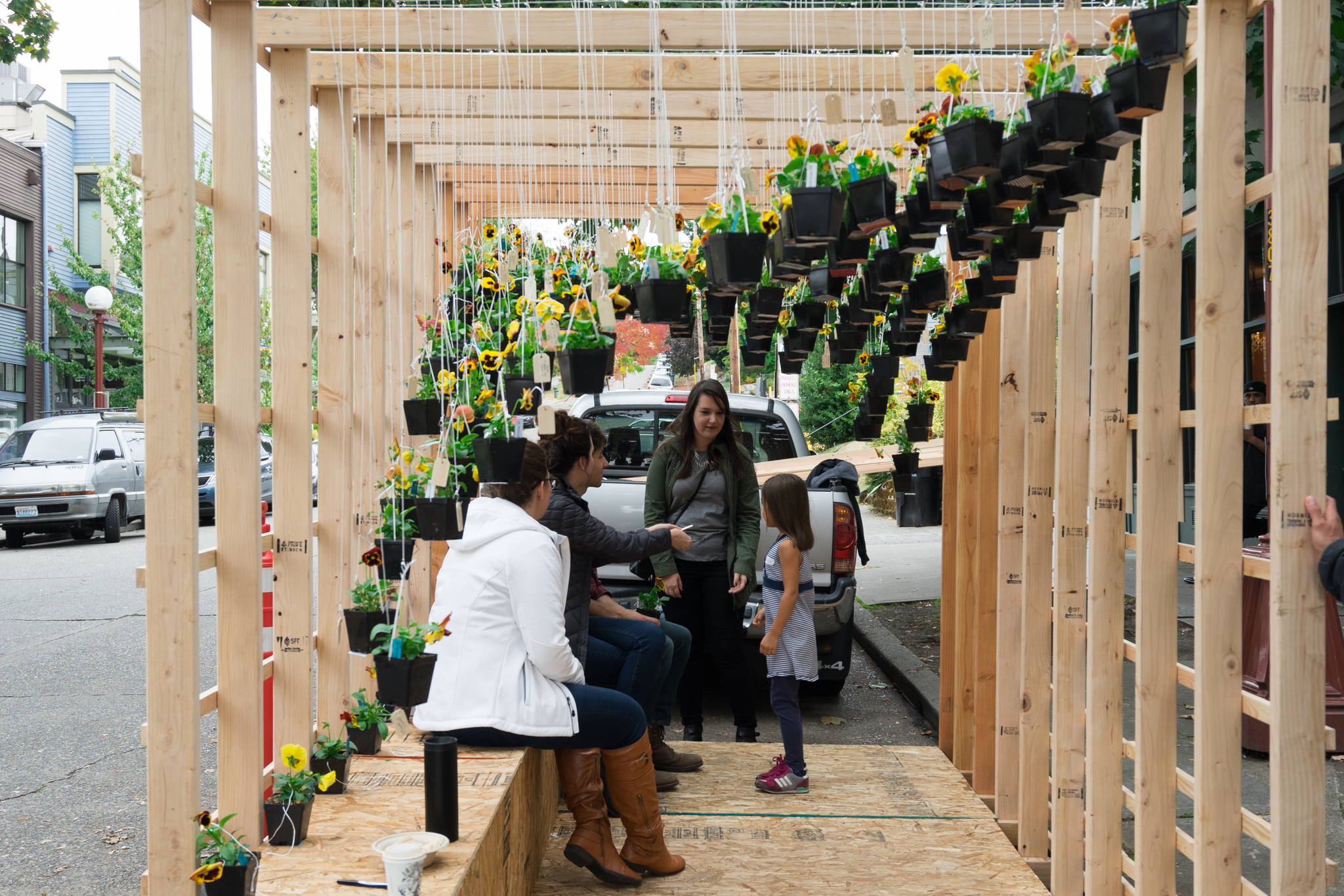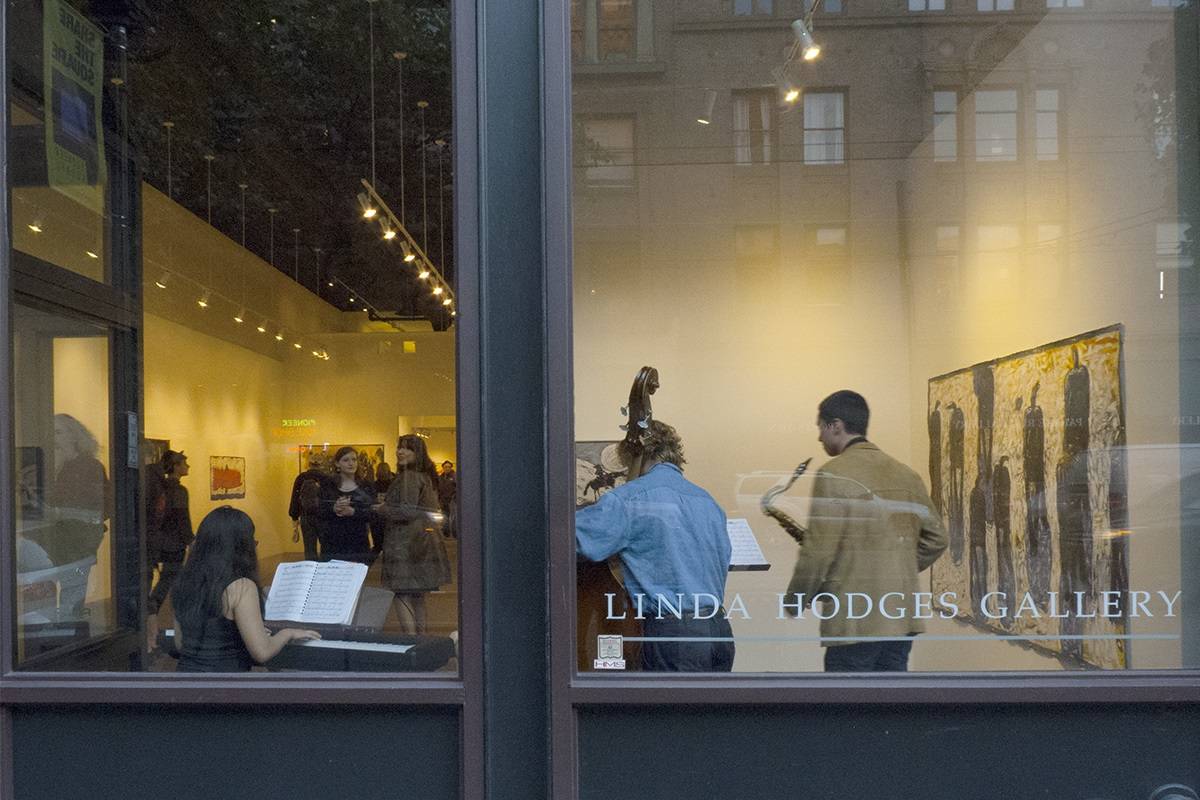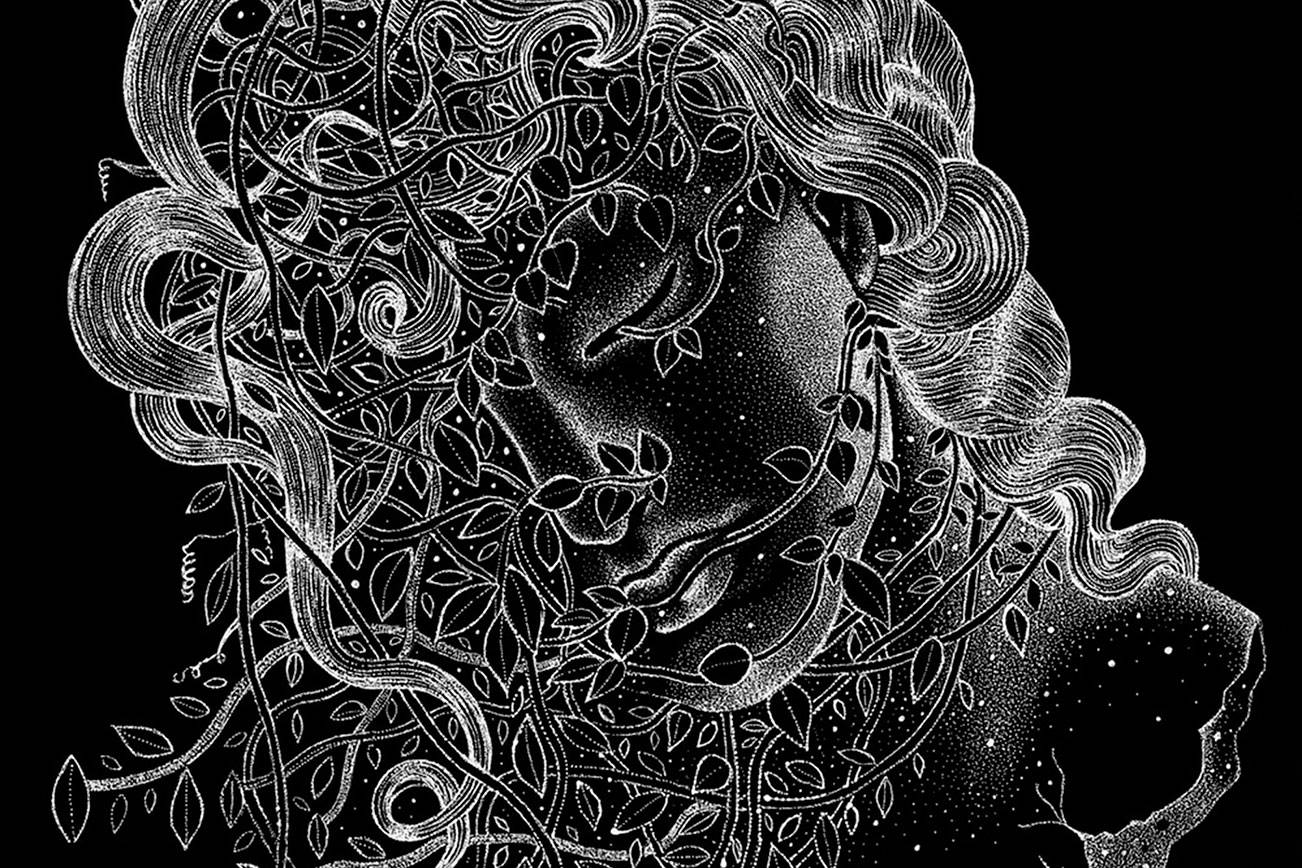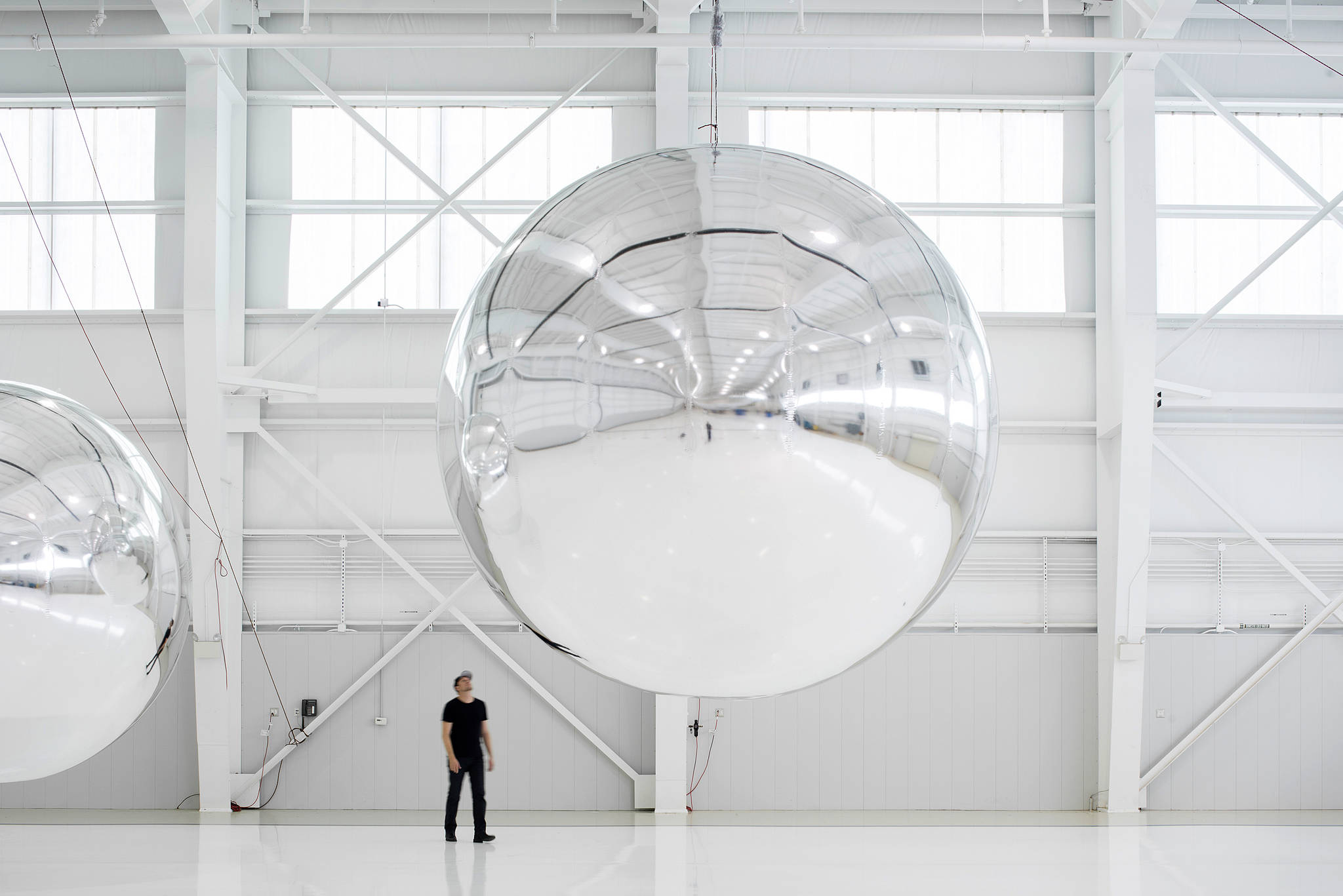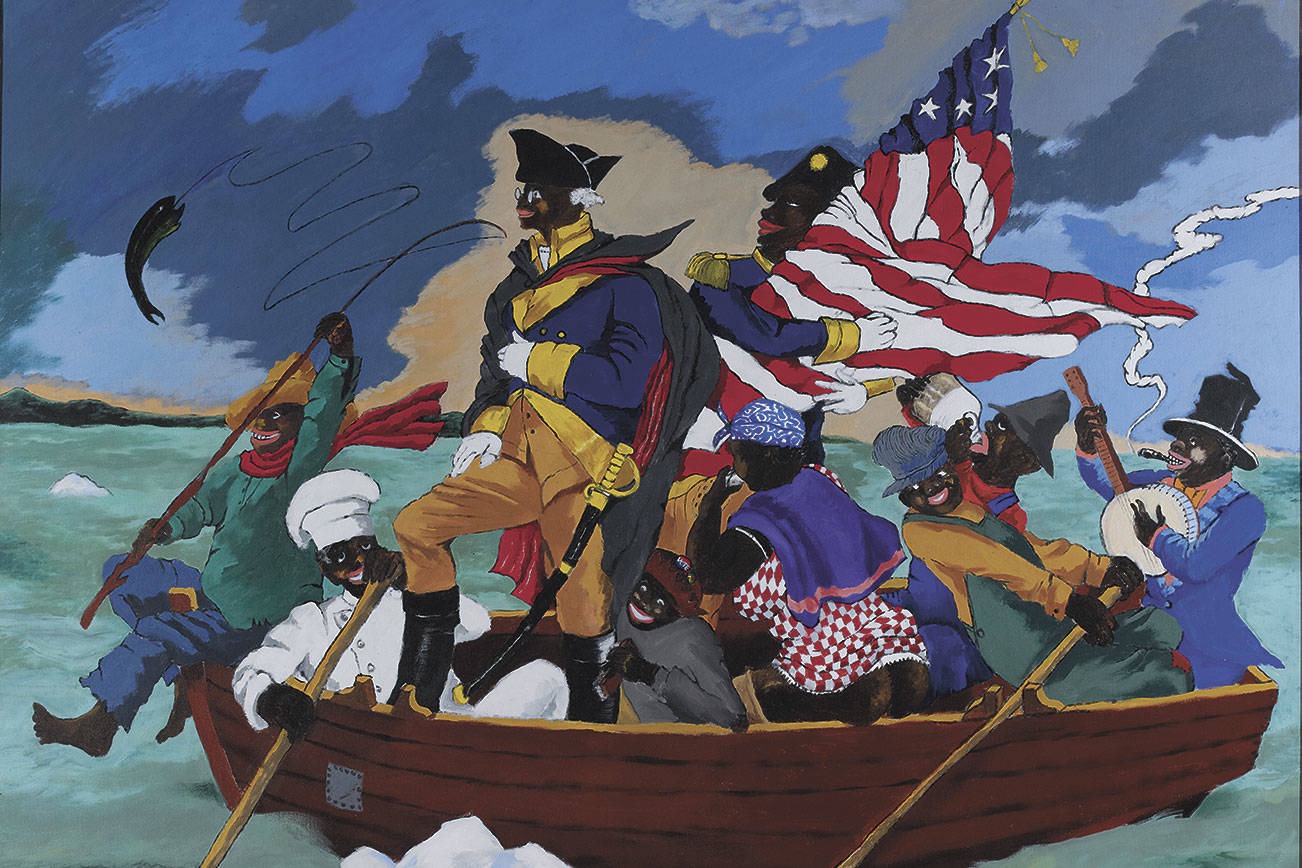What do a collaborative sculpture of marshmallows and straws, a 10-ton ice cube, an interactive mural, and an inflatable forest have in common? They will all be part of the 2016 Seattle Design Festival’s block party this weekend—just the beginning of two weeks of public exhibitions, activities, parties, and performances on this year’s theme, Design Change. The festival is a great venue for creative professionals to meet, collaborate, and see what others are doing, but it also creates opportunities for engagement with a diverse public. Far from a closed professional conference, the Seattle Design Festival aims to expand how we all define and think about design.
The festival is the main annual event for Design in Public, an initiative founded in 2011 by the Seattle chapter of the American Institute of Architects. AIA Seattle hosts curated, public exhibits and programs year-round specifically focused on architecture. Design in Public’s interdisciplinary focus nurtures relationships among citizens, designers, businesses, and officials. The goal is the co-creation of a shared city through many perspectives.
The Seattle Design Festival is both a celebration of such work and an extension of it. More than 80 happenings and installations have been organized by design firms, architects, and artists—in addition to the hundreds of eclectic parklets that will appear around the city on PARK(ing) Day, September 16 and 17. (PARK(ing) Day has traditionally been a one-day event on Friday, but some of the parklets will be open on Saturday this year.) Past installations have included a chicken coop; hundreds of potted flowers that passersby were free to take home; tables and chairs set up with board games; unconventional benches with phone chargers built in; and a tiny putting green.
Many of these parklets were designed by non-professional designers who simply answered the public call and wanted to do something fun for the public. That’s precisely the kind of engagement that Design in Public and city officials want to see. S. Surface, program director of Design in Public, expressed a more holistic view of design as a strategy that can be applied across many fields: “I’m really interested in getting people who might not think of themselves as designers to see the ways in which they do design, and the ways that design is relevant to them.” With professional experience as an architect, designer, activist, and artist, Surface is especially qualified to steward festival participants as they create and collaborate on multidisciplinary projects.
In addition to imaginative sculptures and installations, the block party in Occidental Park will showcase top entries from design competitions relevant to the region. Architects Without Borders will present life-saving tools, methods, and systems from their quake-preparedness design competition. The Industrial Designers Society of America will feature select entries from their IMVISIBLE competition, which seeks new strategies for aiding the homeless.
Social justice and sustainability are key features in many of the lectures as well, from discussions of the innovative Beacon Hill Food Forest to a panel on mitigating the effects of income inequality. Meanwhile, new technology gets its due with a VR Hackathon on the second weekend and an interactive multimedia exhibition at the Hedreen Gallery, Robots Building Robots.
One of the great things about the Seattle Design Festival is its inclusive proposal process. If two alike proposals are submitted, the SDF team does not simply eliminate one. Instead, they introduce the entrants. If a proposal isn’t quite what the festival is wanting, the SDF team works with the entrant to help develop the idea. This more engaged model of dealing with applicants not only makes for more diverse and sophisticated results, it also helps participants think differently about their own processes going forward.
This also applies to the questionnaire that SDF sends to participants: Does a venue have all-gender restrooms? Does it have places to change diapers and breastfeed? Will there be language interpretation or ASL? “Sometimes people just hadn’t thought about these things when planning an event,” Surface says. “We get feedback from participants saying, ‘We hadn’t thought about having all-gender restroom signs, but there’s no reason we couldn’t, so we did, and now we do it for all our events.’ ”
It isn’t just about accessibility, but ensuring that panel discussions meet SDF’s vision by bringing in a balance of perspectives across background, race, and gender lines. “In our FAQ for the festival, we ask that the event doesn’t land SDF on the tumblr You Have an All-Male Panel,” Surface says. It seems to have worked, though. It’s Surface’s second time organizing the show, and across 200 events the balance has not been hard for organizers to achieve once they knew to think about it in the first place. “When people are thinking about that, knowing it’s expected of them, they do it, and they get great people. We get participants who aren’t the standard greatest-hits on the topic. They get to premiere new perspectives.”
Of course, these participants are activists, professionals, and officials with a specialized knowledge. The real success of the Seattle Design Festival will depend on whether laypeople come and engage and willingly share their own perspectives. After all, regardless of our vocation, we are all neighbors, all facing the same changing landscape, all helping to shape its future. Will you be part of it? Seattle Design Festival, Multiple Venues, see designinpublic.org for details. Sept. 10-23.
visualarts@seattleweekly.com
